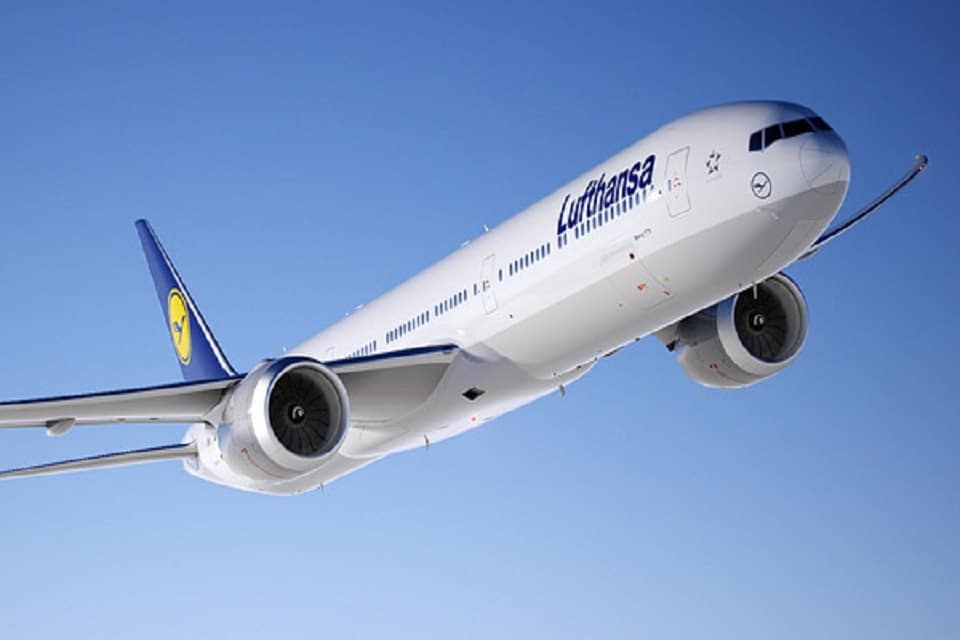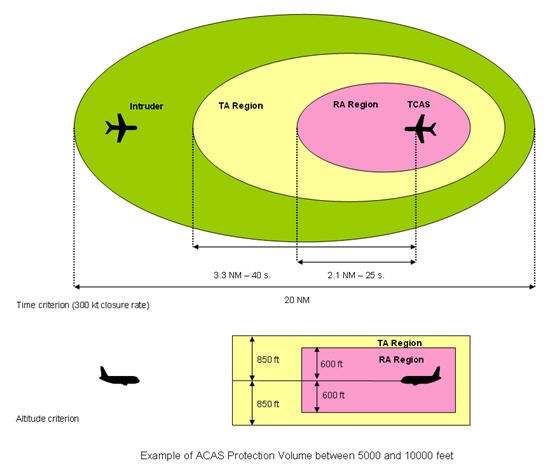Aviation
Flying into the Europe then your Aircraft should to be equipped with the latest ACAS
The Airborne Collision Avoidance System II (ACAS II) was introduced in order to reduce the risk of mid-air collisions or near mid-air collisions between aircraft.

What is ACAS ?
The Airborne Collision Avoidance System II (ACAS II) was introduced in order to reduce the risk of mid-air collisions or near mid-air collisions between aircraft. It serves as a last-resort safety net irrespective of any separation standards. ACAS II is an aircraft system based on Secondary Surveillance Radar (SSR) transponder signals. ACAS II interrogates the Mode C and Mode S transponders of nearby aircraft (‘intruders’) and from the replies tracks their altitude and range and issues alerts to the pilots, as appropriate. Non-transponding aircraft are not detected.
Types of ACAS
- ACAS I Gives Traffic Advisories (TAs) but does not recommend any manoeuvres.
- ACAS II Gives Traffic Advisories (TAs) and Resolution Advisories (RAs) in the vertical sense (direction)
- ACAS III Gives TAs and RAs in vertical and/or horizontal directions
How does it works ?

pic source : en.wikipedia.org

You are flying into the EU? As of 01/12/2015, your aircraft needs to be equipped with the latest airborne collision avoidance system.
Article 1
Subject matter and scope This Regulation lays down common airspace usage requirements and operating procedures for airborne collision avoidance to be fulfilled by:
(a) operators of aircraft referred to under Article 4(1)(b) and (c) of Regulation (EC) No 216/2008 undertaking flights into, within or out of the Union; and
(b) operators of aircraft referred to under Article 4(1)(d) of Regulation (EC) No 216/2008 undertaking flights within the airspace above the territory to which the Treaty applies as well as in any other airspace where Member States apply Regulation (EC) No 551/2004 of the European Parliament and of the Council
Article 2
Definitions For the purposes of this Regulation the following definitions shall apply:
(1) ‘airborne collision avoidance system (ACAS)’ means an aircraft system based on secondary surveillance radar (SSR) transponder signals which operates independently of ground-based equipment to provide advice to the pilot on potential conflicting aircraft that are equipped with SSR transponders;
2)‘airborne collision avoidance system II (ACAS II)’ means an airborne collision avoidance system which provides vertical resolution advisories in addition to traffic advisories;
(3) ‘resolution advisory (RA) indication’ means an indication given to the flight crew recommending a manoeuvre intended to provide separation from all threats or a manoeuvre restriction intended to maintain existing separation;
(4) ‘traffic advisory (TA) indication’ means an indication given to the flight crew that the proximity of another aircraft is a potential threat.
Article 3
Airborne collision avoidance system (ACAS)
1. The aeroplanes referred to in Section I of the Annex to this Regulation shall be equipped with and operated in accordance with the rules and procedures as specified in the Annex.
2. Member States shall ensure that operation of aeroplanes referred to in Article 1(2)(a) of Regulation (EC) No 216/2008 comply with the rules and procedures specified in the Annex in accordance with the conditions set out in that Article.
Article 4
Special provisions applying to operators subject to Council Regulation (EEC) No 3922/91 (1)
1. By derogation from provisions OPS 1.668 and OPS 1.398 of Annex III to Regulation (EEC) No 3922/91, Article 3 and the Annex to this Regulation shall apply for operators of aeroplanes referred to in Article 1(a).
2. Any other obligation imposed on air operators by Regulation (EEC) No 3922/91 as regards the approval, installation or operation of equipment shall continue to apply to ACAS II.
Article 5
Entry into force and application
1. This Regulation shall enter into force on the 20th day following its publication in the Official Journal of the European Union.
2. Articles 3 and 4 shall apply as of 1 March 2012.
3. By way of derogation from paragraph 2, in the case of aircraft with an individual certificate of airworthiness issued before 1 March 2012, the provisions of Article 3 and 4 shall apply as of 1 December 2015.
Original document: Download
source: EASA (European Aviation Safety Agency)
Note : Education Pursposes
Liked it ..!?
Share with your friends and family

Aviation
Airbus Enhances A350 Cabin with 10-Abreast Seating

Airbus has announced a new partnership with Jiatai Aircraft Equipment, a Chinese aircraft seating manufacturer, to supply upgraded economy-class seats for the A350 widebody series.
This collaboration, unveiled at the 2024 Airshow China, focuses on developing a newly designed economy seat tailored for the A350‘s New Production Standard (NPS) cabin.
One of the key features of the NPS cabin is the ability to accommodate 17-inch wide economy seats, compared to the previous 16.5-inch wide seats that airlines were limited to in the A350’s earlier configurations.
British Airways Unveils Its Brand-New First Class Cabin for the Airbus A380
This change is made possible by the expanded space in the NPS cabin, which is 35 inches longer and 4 inches wider than the previous version. This extra space is achieved by slightly moving the cockpit wall forward and shifting the rear pressure bulkhead back by one frame.
The wider cabin allows airlines to add up to 30 extra economy seats without compromising comfort. For airlines opting for a 3-4-3 seating layout, the 17-inch wide seats are an excellent choice for a more comfortable passenger experience. However, some airlines, such as Iberia, may choose to retain a 9-abreast layout with wider seats for added comfort.
The NPS cabin also offers enhanced flexibility for airline operators. One major advantage is the ability to easily switch between a 9-abreast and 10-abreast seating configuration without requiring significant downtime for aircraft reconfiguration. Airlines can use the same seat rails, tracks, and IFE interfaces, making the transition smoother and quicker.
Etihad Airways Unveils 10 Exciting New Routes for 2025
In addition, the design of the floor attachments and air-conditioning systems has been optimized for 10-abreast seating, meaning airlines can upgrade their cabins without needing to make substantial modifications to the aircraft’s structure.
Though it’s still unclear when Jiatai’s economy-class seats will be officially added to the A350’s Buyer Furnished Equipment (BFE) catalogue, the collaboration marks a significant step toward enhancing the A350’s cabin offerings.
With this partnership, Airbus is providing more seating options for airlines, ensuring that they can meet diverse customer needs while improving overall operational efficiency.
-

 Aviation2 months ago
Aviation2 months agoMicrosoft Flight Simulator Raises $3 Million to Bring Back the An-225 Mriya
-

 Airlines2 months ago
Airlines2 months agoQatar Citizens Can Travel to the United States Without a Visa
-

 Aviation2 months ago
Aviation2 months agoQatar Airways bans these new Electronic Devices on plane
-

 Airlines2 months ago
Airlines2 months agoJapan Airlines Rolls Out Free Domestic Flights to International Passengers
-

 Travel2 months ago
Travel2 months agoQatar Airways Launches Four Additional Flights from Amsterdam
-

 Defence2 months ago
Defence2 months agoWhich Country Has the Largest Fleet of Fighter Aircraft?
-

 Airport2 months ago
Airport2 months agoWestern Sydney Airport Welcomes Its First Plane After 6 Years of construction
-

 Airlines4 days ago
Airlines4 days agoDAMAC Air: Dubai’s New Luxury Airline Offers Free Flights for Registration








